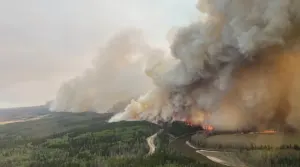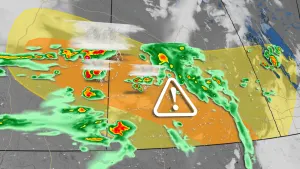
Wintering monarch numbers rise by 35% in Mexico after steep declines
The Monarch butterfly is listed as a “species of special concern” in Canada.
A study led by World Wildlife Fund (WWF) Mexico reveals that the number of wintering Monarchs in Mexico jumped by 35 per cent this past December compared to the previous year.
Each winter millions of Monarchs travel thousands of kilometres south from Canada and the northern U.S. to the Monarch Butterfly Biosphere Reserve and surrounding areas in Mexico.
Since it is not possible for the researchers to count every single butterfly, the populations are measured by documenting the areas that the Monarchs occupy each winter. Just 5.19 acres were occupied in December 2020 compared to 7.02 acres in December 2021.

El Rosario Monarch Butterfly Reserve in Angangueo, Michoacán, Mexico. (Sylvain Cordier/ Getty Images)
Climate change is cited as a significant contributing factor to the shrinking Monarch population. Extreme weather and drought conditions are reducing the presence of milkweed along migratory paths, which is the only food source for Monarch caterpillars. Illegal logging practices are also encroaching on their limited habitats.
"The increase in Monarch butterflies is good news and indicates that we should continue working to maintain and reinforce conservation measures by Mexico, the United States, and Canada," Jorge Rickards, general manager of WWF-Mexico, stated in a press release.
"Monarchs are important pollinators, and their migratory journey helps promote greater diversity of flowering plants, which benefits other species in natural ecosystems and contributes to the production of food for human consumption."
In addition to their role in pollination, Canada's federal government states that “the Monarch is an international symbol of conservation and nature” and has this butterfly listed as a “species of special concern” under the federal Species at Risk Act.
Some of the conservation initiatives the federal government has committed to include establishing protected areas in key Canadian habitats as well as funding for research and monitoring.
Thumbnail image: Letian D/ 500px/ Getty Images











